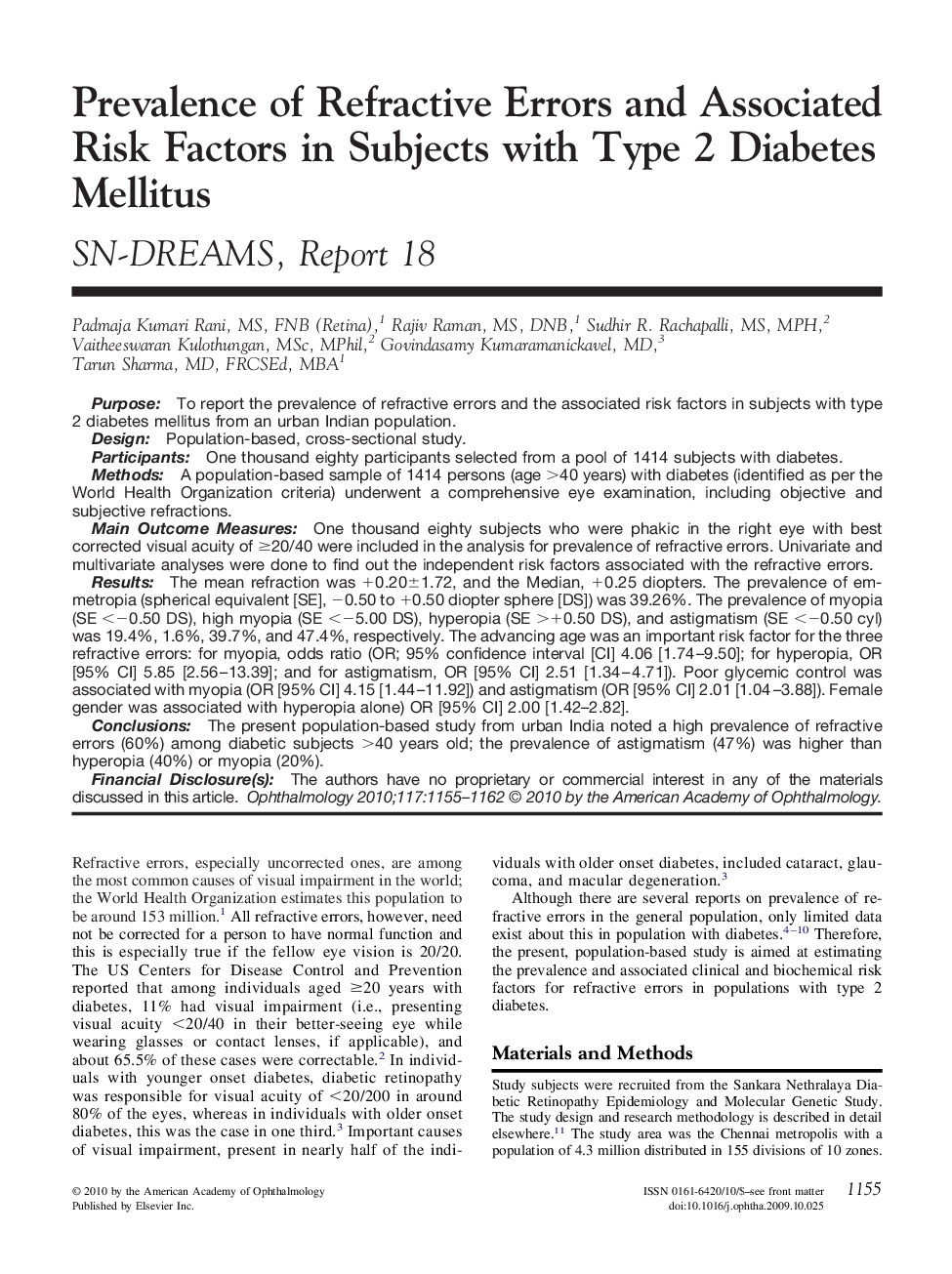| Article ID | Journal | Published Year | Pages | File Type |
|---|---|---|---|---|
| 4027548 | Ophthalmology | 2010 | 8 Pages |
PurposeTo report the prevalence of refractive errors and the associated risk factors in subjects with type 2 diabetes mellitus from an urban Indian population.DesignPopulation-based, cross-sectional study.ParticipantsOne thousand eighty participants selected from a pool of 1414 subjects with diabetes.MethodsA population-based sample of 1414 persons (age >40 years) with diabetes (identified as per the World Health Organization criteria) underwent a comprehensive eye examination, including objective and subjective refractions.Main Outcome MeasuresOne thousand eighty subjects who were phakic in the right eye with best corrected visual acuity of ≥20/40 were included in the analysis for prevalence of refractive errors. Univariate and multivariate analyses were done to find out the independent risk factors associated with the refractive errors.ResultsThe mean refraction was +0.20±1.72, and the Median, +0.25 diopters. The prevalence of emmetropia (spherical equivalent [SE], −0.50 to +0.50 diopter sphere [DS]) was 39.26%. The prevalence of myopia (SE <−0.50 DS), high myopia (SE <−5.00 DS), hyperopia (SE >+0.50 DS), and astigmatism (SE <−0.50 cyl) was 19.4%, 1.6%, 39.7%, and 47.4%, respectively. The advancing age was an important risk factor for the three refractive errors: for myopia, odds ratio (OR; 95% confidence interval [CI] 4.06 [1.74–9.50]; for hyperopia, OR [95% CI] 5.85 [2.56–13.39]; and for astigmatism, OR [95% CI] 2.51 [1.34–4.71]). Poor glycemic control was associated with myopia (OR [95% CI] 4.15 [1.44–11.92]) and astigmatism (OR [95% CI] 2.01 [1.04–3.88]). Female gender was associated with hyperopia alone) OR [95% CI] 2.00 [1.42–2.82].ConclusionsThe present population-based study from urban India noted a high prevalence of refractive errors (60%) among diabetic subjects >40 years old; the prevalence of astigmatism (47%) was higher than hyperopia (40%) or myopia (20%).Financial Disclosure(s)The authors have no proprietary or commercial interest in any of the materials discussed in this article.
